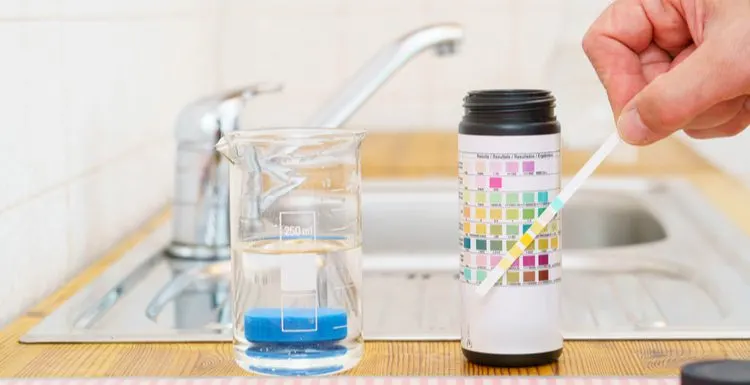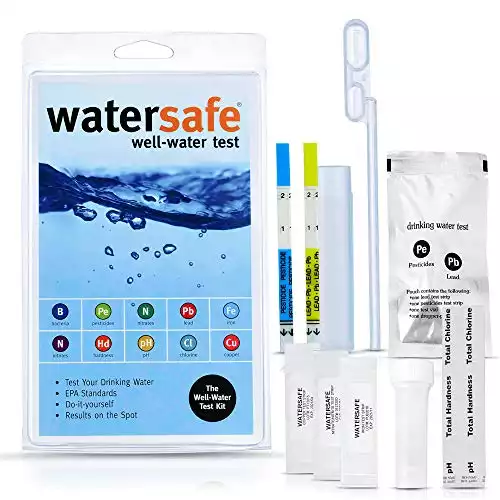Water test kits do more than just ensure your water is free of contaminants.
They help you maintain a healthy lifestyle and ensure your kids are safe. Read on to learn what they are and why every home should have one.
What Is a Water Test Kit?
In some areas, water quality is becoming more and more questionable.
Whether you’re using it for drinking, bathing, swimming, or anything at all, you risk coming into contact with contaminants in your water.
Because of this, it’s essential to know what impurities, if any, are contaminating your water. That’s where a water test kit comes in handy.
You can purchase these convenient, easy-to-use tests from most major retailers so that you can test your water quality from the comfort of your own home.
In a nutshell, water test kits contain everything necessary to test your water and tell you all about its quality.
Most water test kits test for contaminants such as bacteria, chlorine, pesticides, and many others, which we’ll cover in this article.
We’ll give you everything you need to know about water test kits, including the following:
- Different kinds of water test kits
- Where can you buy water test kits?
- How to use your water test kit
- What to consider before purchasing a water test kit
Why Water Testing Is Important
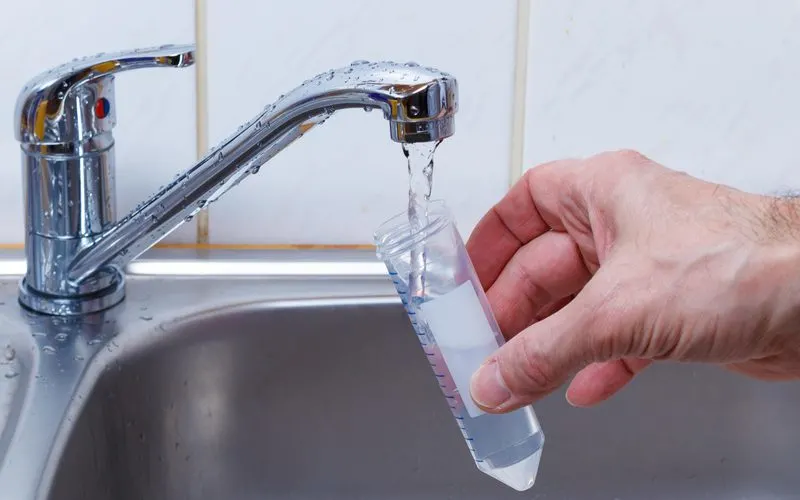
LuchschenF/Shutterstock
As we mentioned before, water test kits provide everything you need to test the quality of your water. While it might seem simple, it’s not that cut-and-dry.
There are many water test kits available on the market, and each one can test for different things. Some of the contaminants that popular water test kits test for are:
- Heavy metals (lead, iron, arsenic, etc.)
- Chlorine
- Fluoride
- Bacteria
- Nitrate and nitrite
- pH level
- Pesticides
- Water hardness
Why Are Water Test Kits Important?
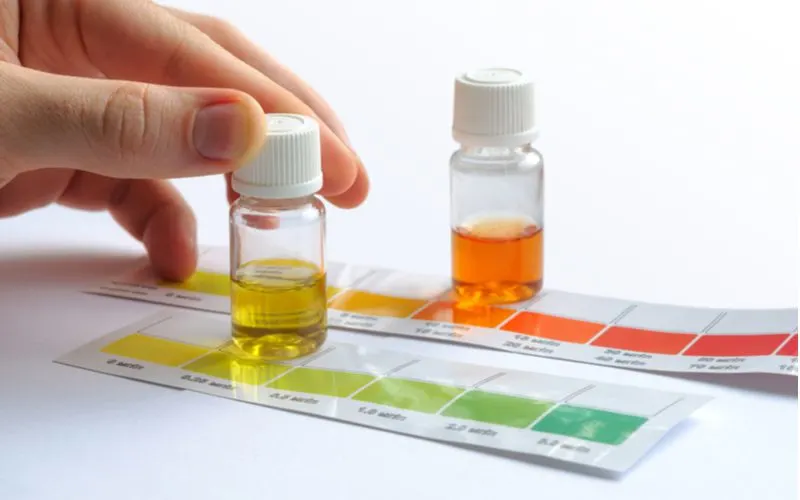
Tetiana_u/Shutterstock
With more and more pollutants and bacteria present in water bodies throughout the country, the higher the risk is that the water in your home is also contaminated.
While your local water utility company should conduct water quality tests frequently, there’s always a chance those tests might not be accurate for your home specifically.
Therefore, it’s important to know the quality of the water in your home so you can avoid coming into contact with any potentially harmful impurities.
Knowing what contaminants are present in your water is also vital so you know how to properly purify it according to your needs.
For example, while some water might be perfectly safe to use for bathing, swimming, and laundry, it might not be safe for drinking.
Benefits of Water Test Kits
Using a water test kit in your home comes with many benefits, including:
- A sense of security
- Convenient results from your home
- Fewer health risks and concerns
- Knowledge of hard-to-find contaminants
A Sense of Security
Learning the quality of water that you and your family use can provide a sense of security and peace of mind.
Knowing that your water is clean and contaminant-free can help ease any anxiety you might have about your tap water.
Convenient Results from Home
Water test kits provide quick and convenient results from the comfort of your own home, so there’s no need to hire a lab or professional to test your water quality.
All you need to do is follow the instructions, and the water test kit does the work for you.
Fewer Health Risks or Concerns
It’s no secret that the quality of your water can impact your health. Contaminated water can be dangerous to ingest, but it can be hazardous to your outward physical health as well.
Issues such as hard water can also cause health problems. Hard water, as an example, can negatively affect your complexion and your hair.
It can also worsen your eczema, acne, and psoriasis, cause dry and tight skin, and cause a buildup on your hair. Having contaminant-free water can lessen these types of issues.
Knowledge of Hard-to-Find Contaminants
As we mentioned before, your water or utility company should conduct a water quality test at least once a year.
While this is great for knowing the quality of the water in the water plant, your home’s water could have different results.
Using a water test kit provides you with knowledge of any hard-to-find contaminants specific to your home.
Contaminants You’ll Test For
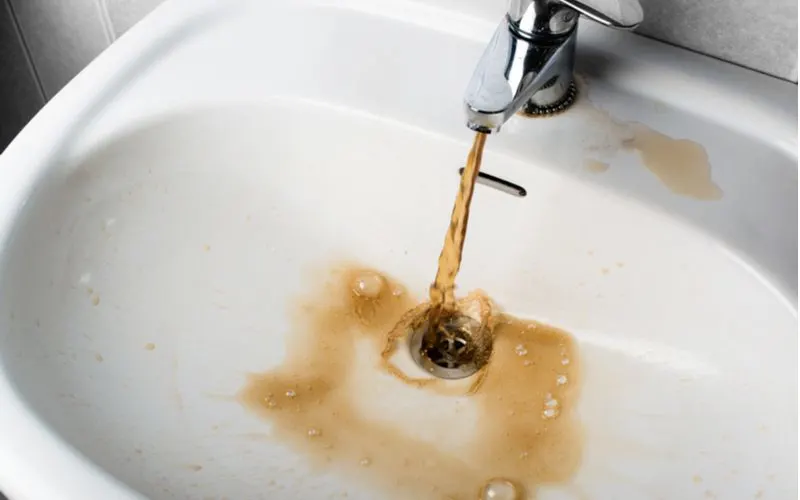
To understand what type of water test kit you need, you should first understand what kinds of contaminants the kits will test for and how they can affect you.
pH Level
Any standard test kit will almost definitely include pH test strips. Water should have a pH level of 6.5–8.5, with 7 being the ideal value.
If your water’s pH is below 6.5, it can be dangerously acidic and corrode your pipes and fixtures. If your water’s pH is above 8.5, its alkalinity can be dangerous, causing hard water stains and deposits.
Water Hardness
While the hardness of your water won’t have any effect on your health if you ingest it, as our previous example showed, it could affect not only your skin and hair but also your faucets and fixtures.
If your water is too hard, it can leave mineral deposits on your fixtures and kitchen appliances. If your water is too soft, it can cause copper, iron, or lead to leach into your water supply.
Chlorine
Chlorine is a chemical commonly used in water plants to kill bacteria or prevent them from growing.
Water test kits will test for any residual chlorine that could have made it from the water plant to your water supply.
Heavy Metals
The presence of heavy metals in your water, such as lead, iron, or copper, can be dangerous to ingest in large quantities.
These metals likely would not show up in a water plant report since, most of the time, contamination from these metals comes from corrosion in your pipes at home.
Nitrate and Nitrite
Nitrate and nitrite levels are directly related to pesticide or fertilizer use. The presence of nitrate or nitrite in your water could be a sign that your water supply contains pollutants. These compounds can potentially be harmful if ingested.
Bacteria
While most water suppliers treat water with chlorine to kill and prevent bacteria, it’s always possible that harmful bacteria can contaminate your water supply.
Sulfur
Hydrogen-sulfide-contaminated water, more commonly known as sulfur water, gives off a rotten egg smell. Sulfur-contaminated water is toxic, and you should not ingest it.
Chloride
Chloride can become present in your water if you use a water softener or live somewhere where roads are regularly salted. Chloride can make your water taste salty and can even be dangerous to consume in large quantities.
Types of Water Test Kits
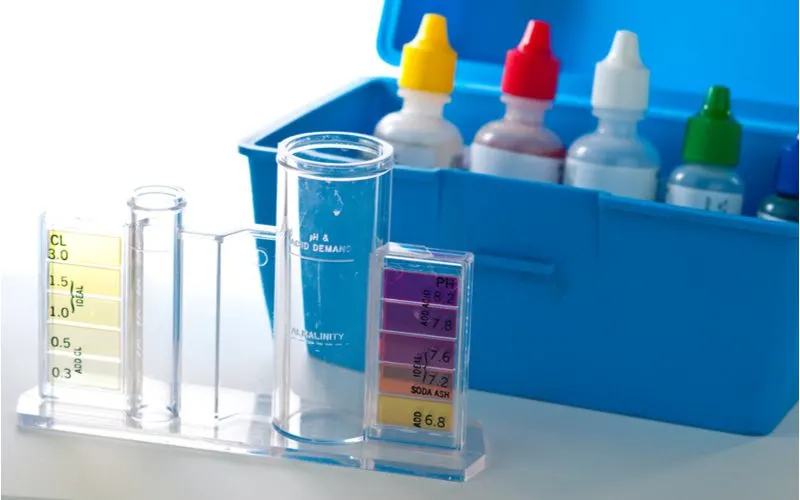
Tammykayphoto/Shutterstock
Now that we’ve covered what water test kits are and why they’re important, we will cover some of the most popular types of water test kits available on the market.
The three types of water test kits that are most common are:
- Tap water test kits
- Well water test kits
- Complete water test kits
Tap Water Test Kits
Tap water test kits are mainly used by people with access to city water since, in most cases, cities regularly treat and test their water supplies.
Tap water test kits usually only test for the most common water quality issues, such as pH level, water hardness, chlorine, and heavy metals.
To use a tap water test kit, all you need to do is obtain a sample of your tap water and dip each provided test strip into your sample.
The color indicated lets you know the levels of each contaminant, if there are any, in your water.
Well Water Test Kits
Well water test kits test for a broader spectrum of contaminants since well water is more likely to have impurities.
Well water test kits commonly test for pH level, nitrate/nitrite, sulfur, bacteria, water hardness, and heavy metals.
To use a well water test kit, you need to obtain a water sample directly from your well or borehole. Then, dip each of the provided test strips into your sample.
The color indicated will let you know what level of contamination, if any, your well water exhibits and the various pollutants found in the water.
Complete Water Test Kits
Complete water test kits test for the broadest range of contaminants. You can use these for any water supply.
Complete water test kits test for everything: pH level, nitrate/nitrite, sulfur, chlorine, sulfur, water hardness, bacteria, heavy metals, and chloride.
To use a complete water test kit, obtain a water sample from the water supply you want to test. Then, dip each test strip provided into your sample.
You can compare the color on your strip to the color indicator provided to find out what contaminants exist in the sample and their levels.
Frequently Asked Questions
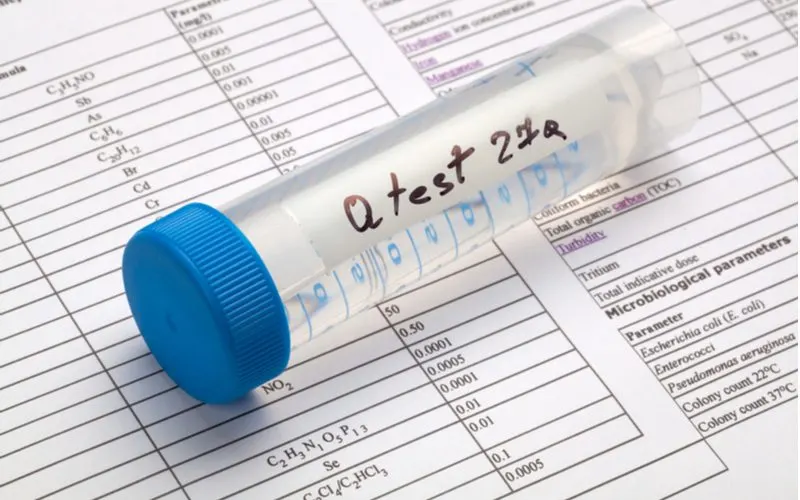
Below are some of the most frequently asked questions about water test kits.
Are Water Test Kits Accurate?
Every water test kit is different, so it’s important to pay close attention to the manufacturer. Most water test kits meet Environmental Protection Agency standards, which means they are as accurate as possible.
How Do I Use a Water Test Kit?
Water test kits come with a sample vial and several different test strips. To use a water test kit, all you need to do is fill the vial with a sample from your water supply and dip each test strip into the sample.
Each strip turns a different color depending on the possible contaminants. The test kit will have a color indicator scale that will help you determine your water quality.
What Should I Do to Prepare for a Water Test?
Before collecting your water sample, you should clean your faucet with isopropyl alcohol or bleach and let it dry for 1-2 minutes. This is all the preparation needed for an at-home water test.
How Do I Read a Water Test Strip?
Each water test kit comes with a color indicator scale for every contaminant tested. After you dip your test strip into the water sample, you'll notice it turn a different color.
To read the test strip, all you do is compare the color on the test strip to the color indicator scale on the test kit. This gives you your contaminant values.
So, Why Are Water Test Kits Important?
The simple answer is that water test kits give you the ability to test the quality of your water at the convenience of your home.
It’s essential to know the quality of your water so you can ensure your and your family’s health and safety.
So, what are you waiting for? Buy one today! Doing so could help you get closer to ridding your home of toxins.

